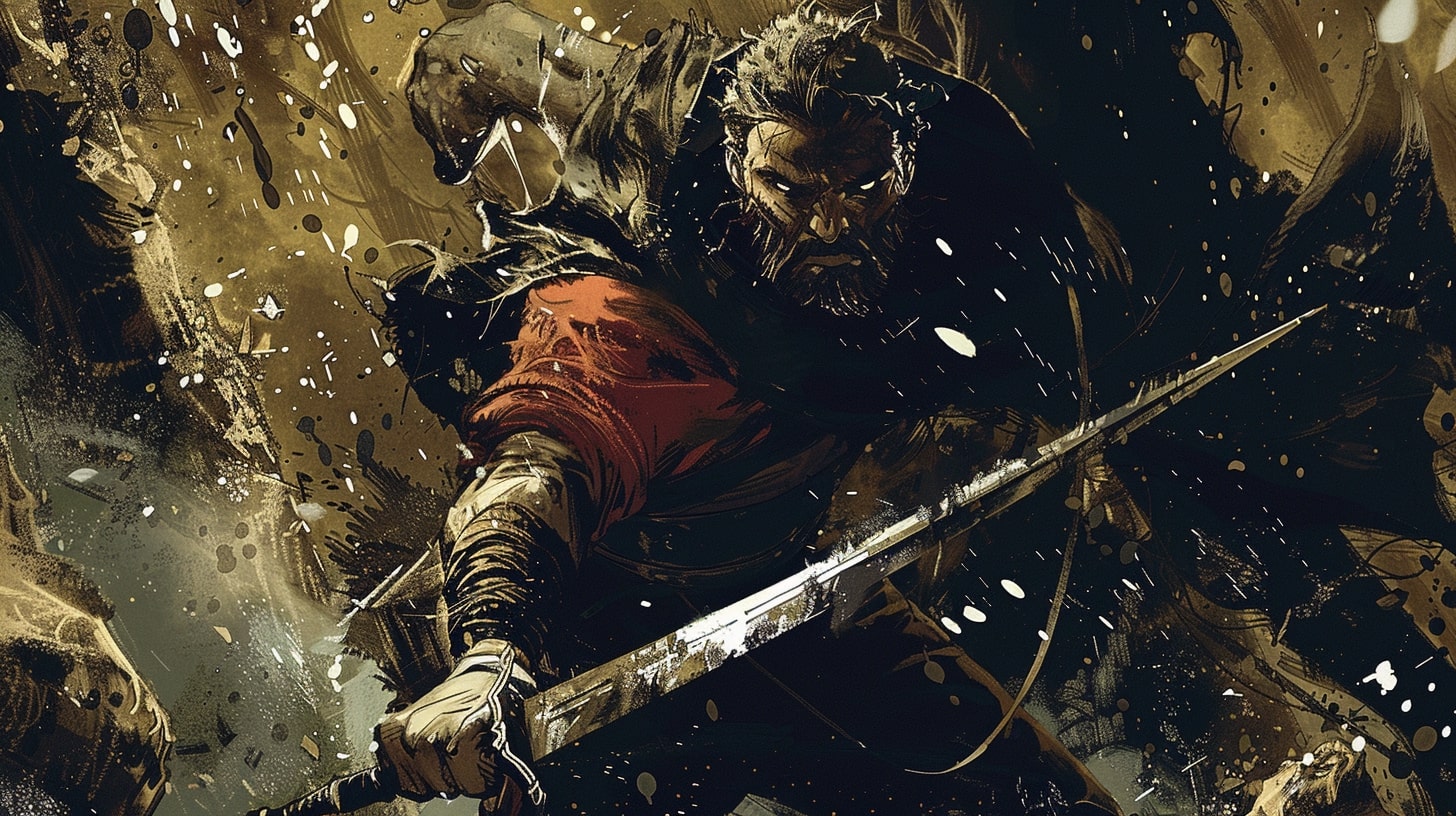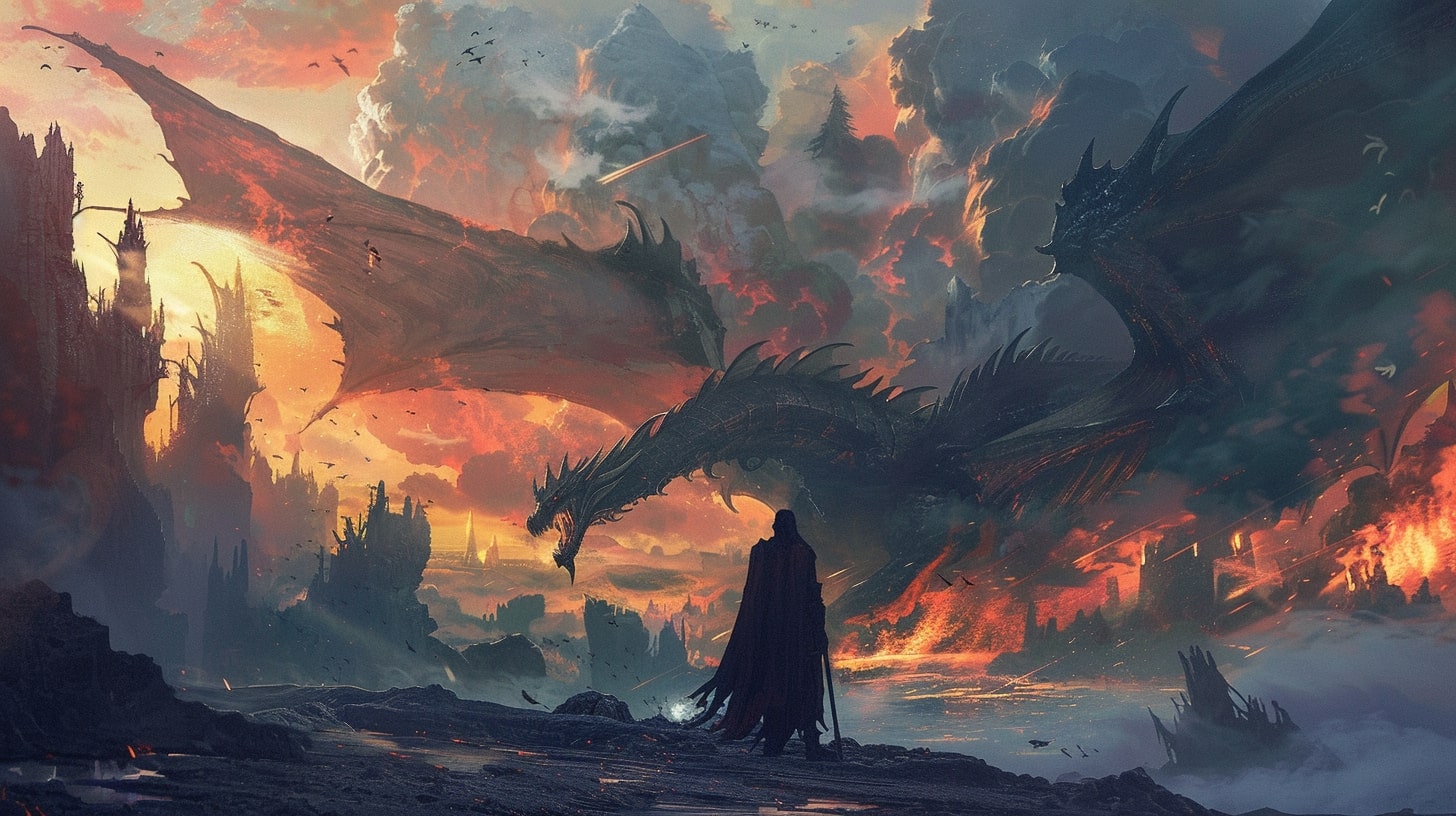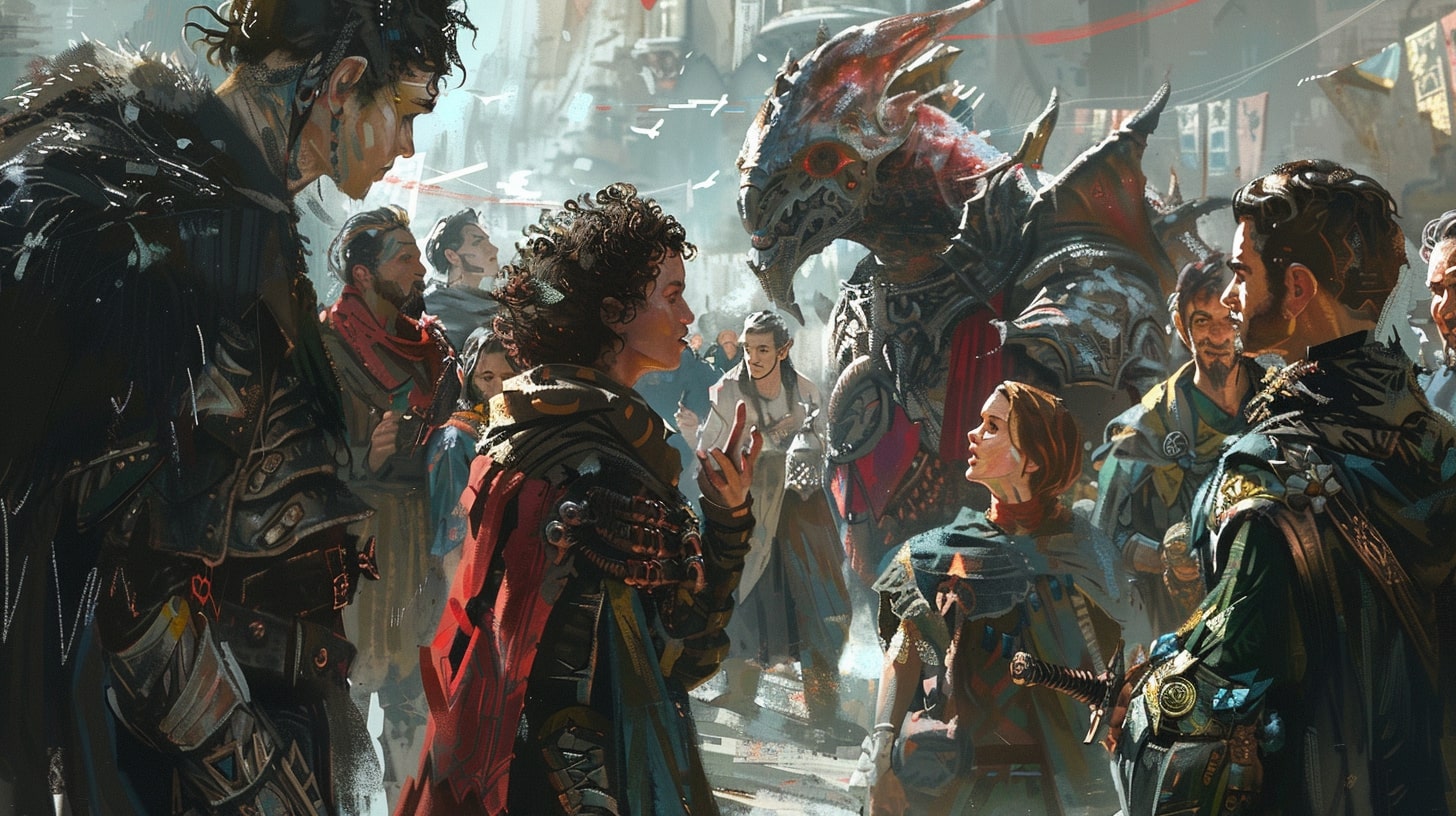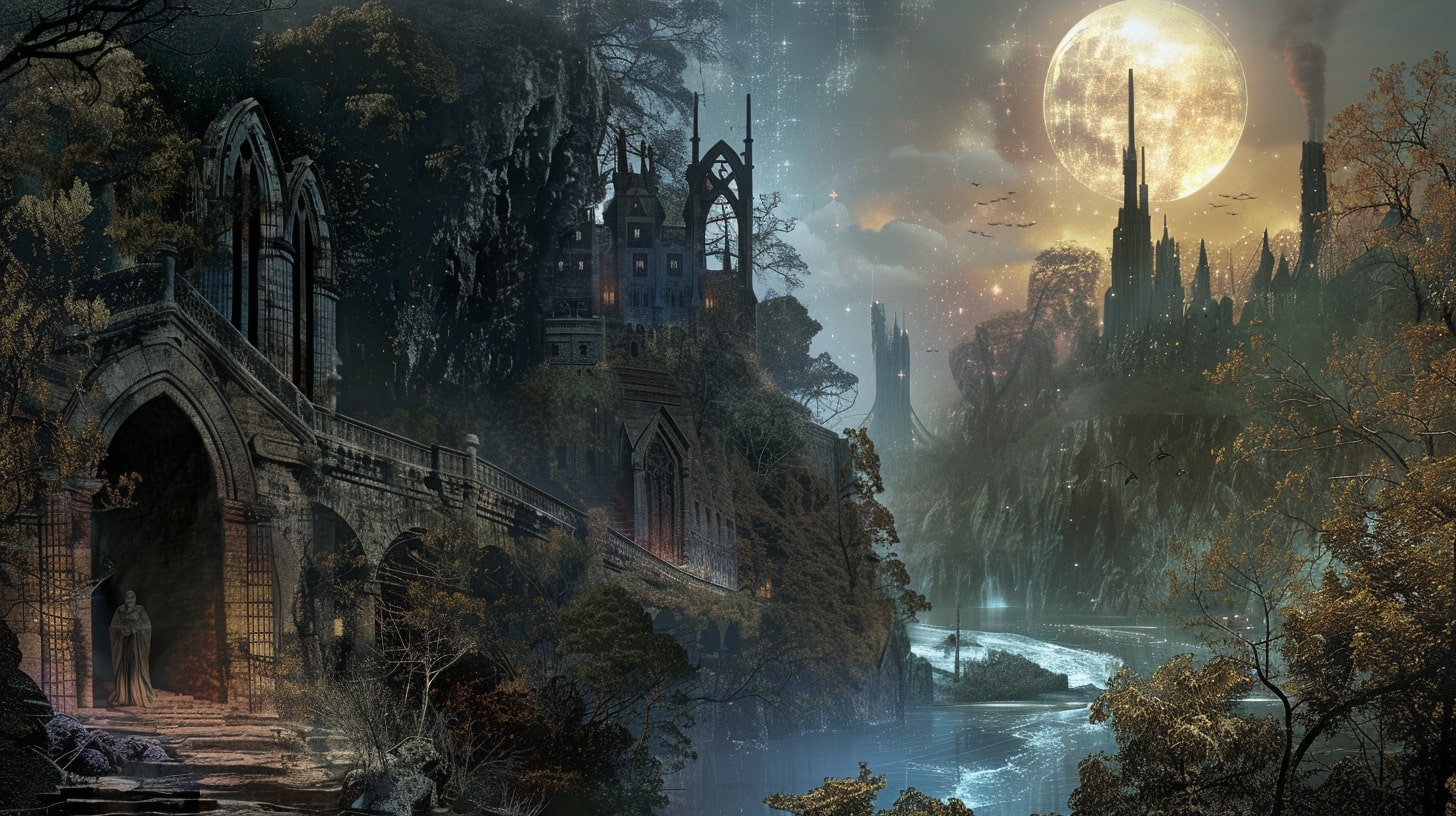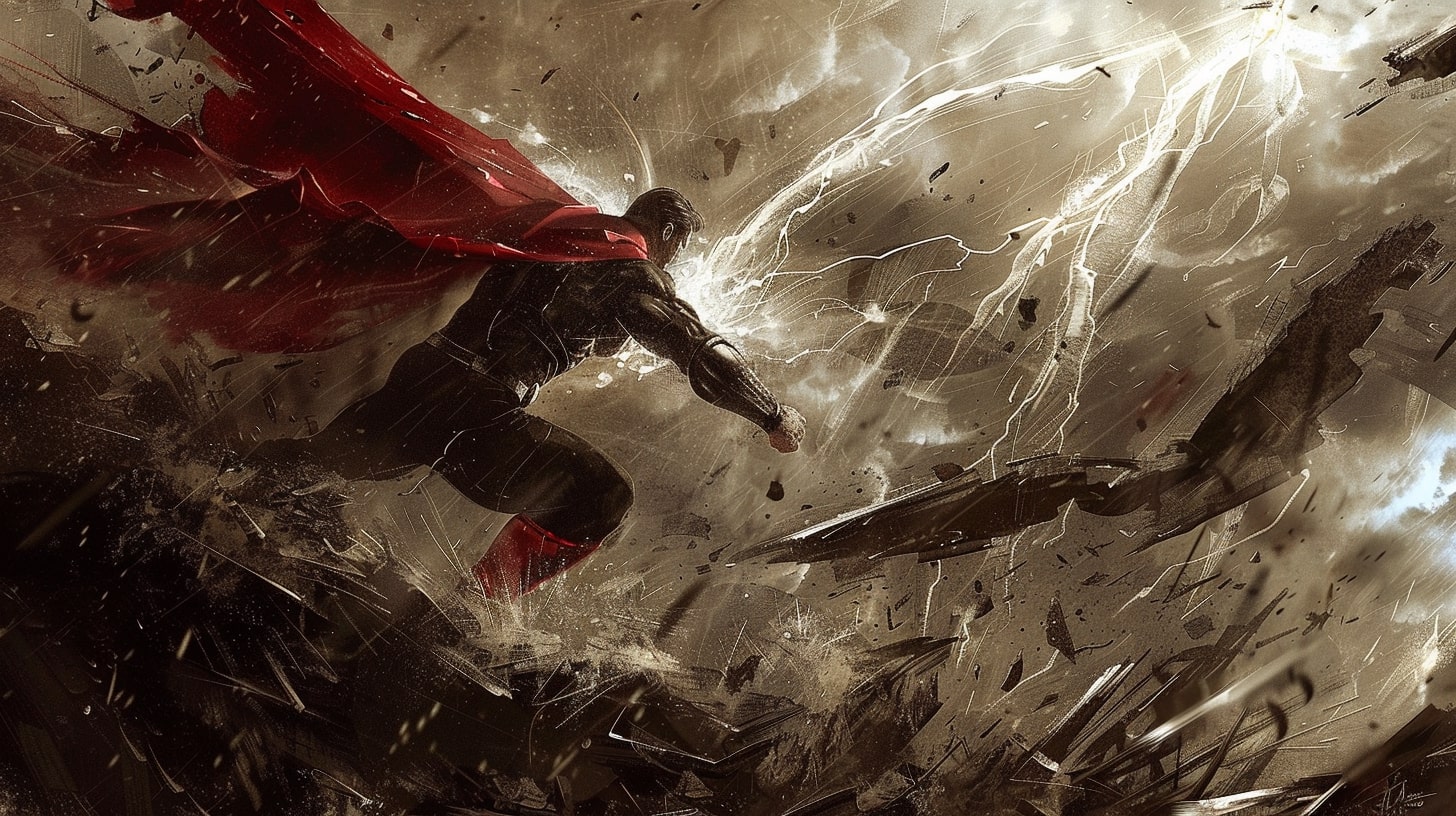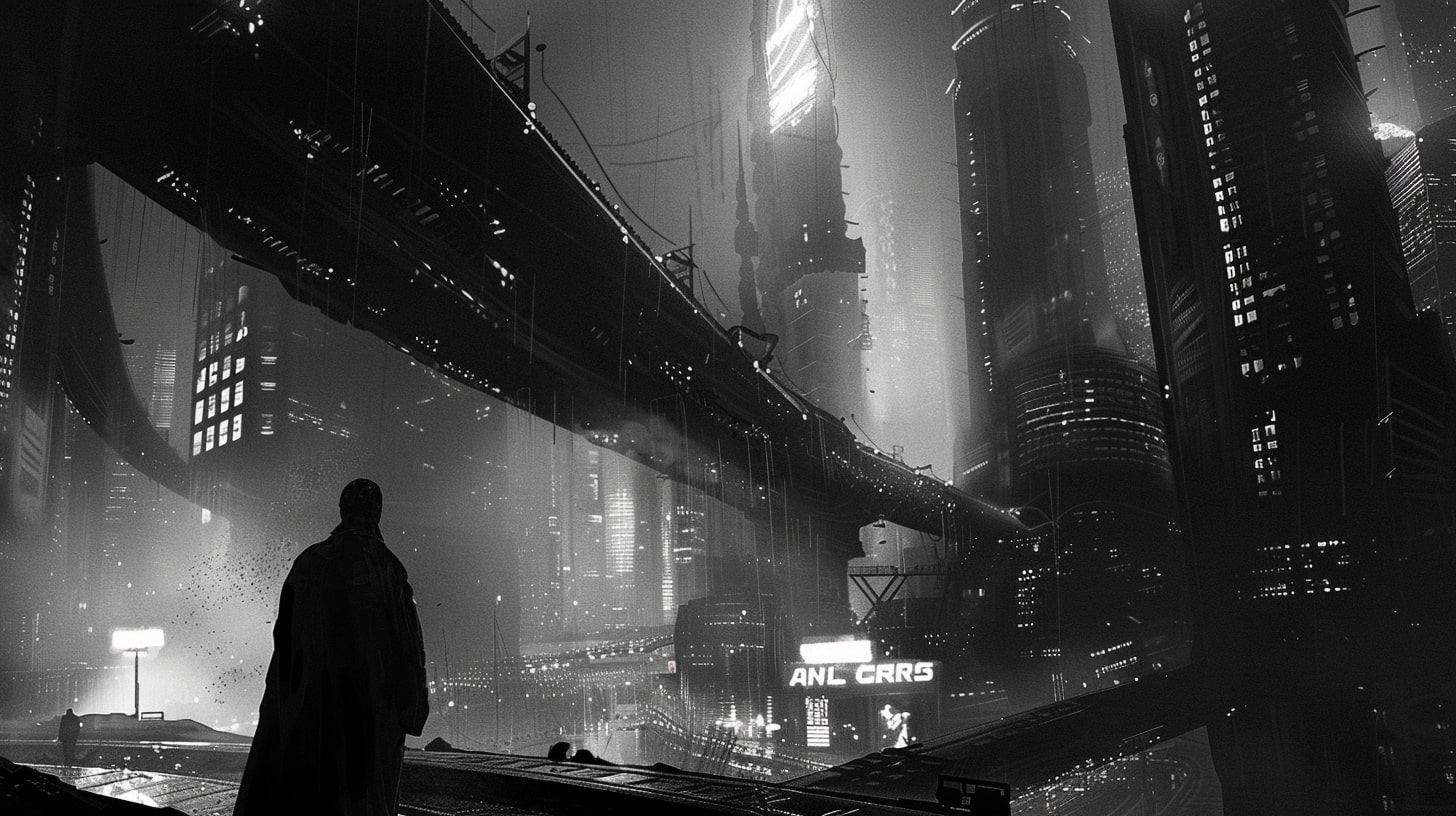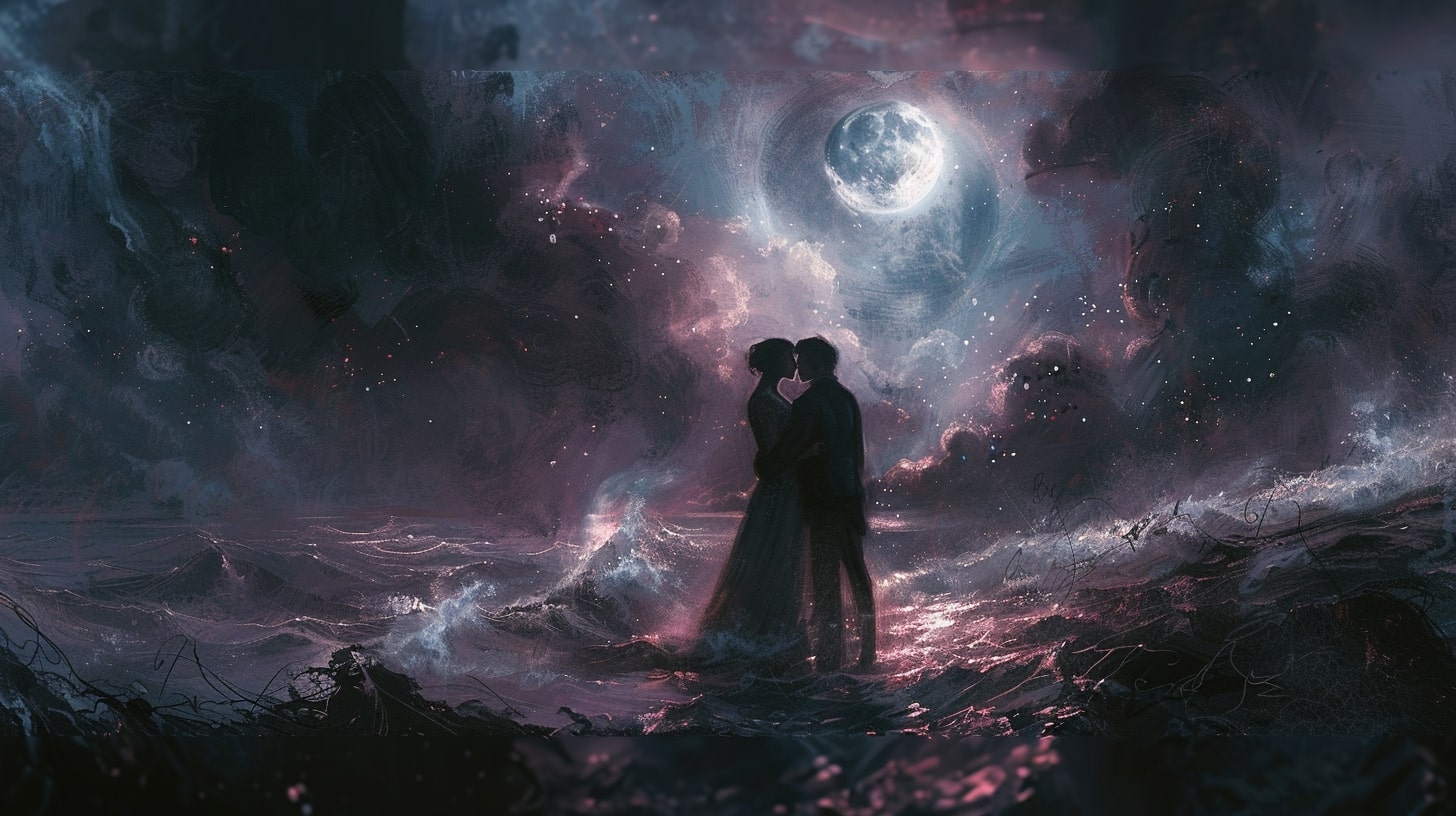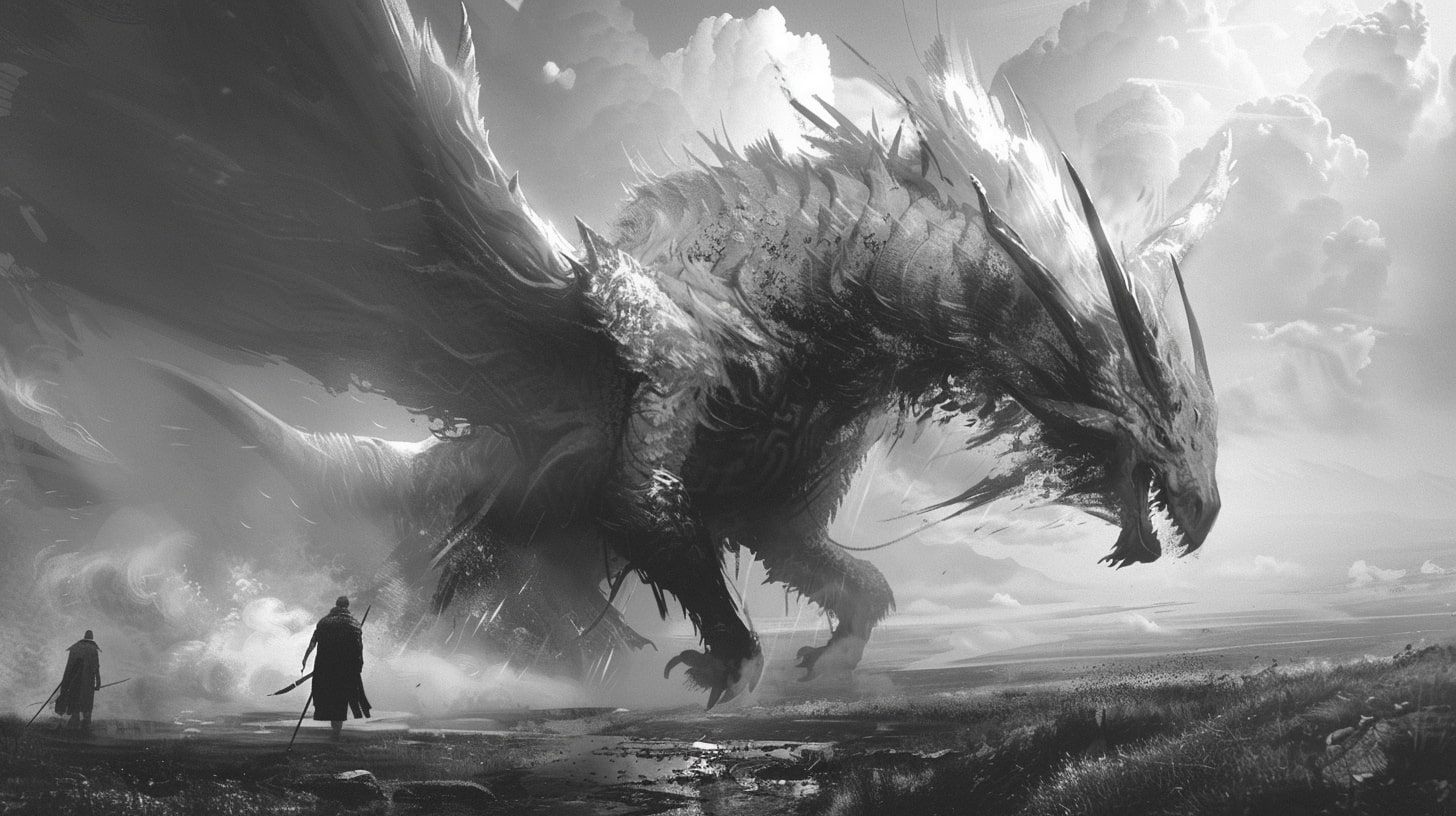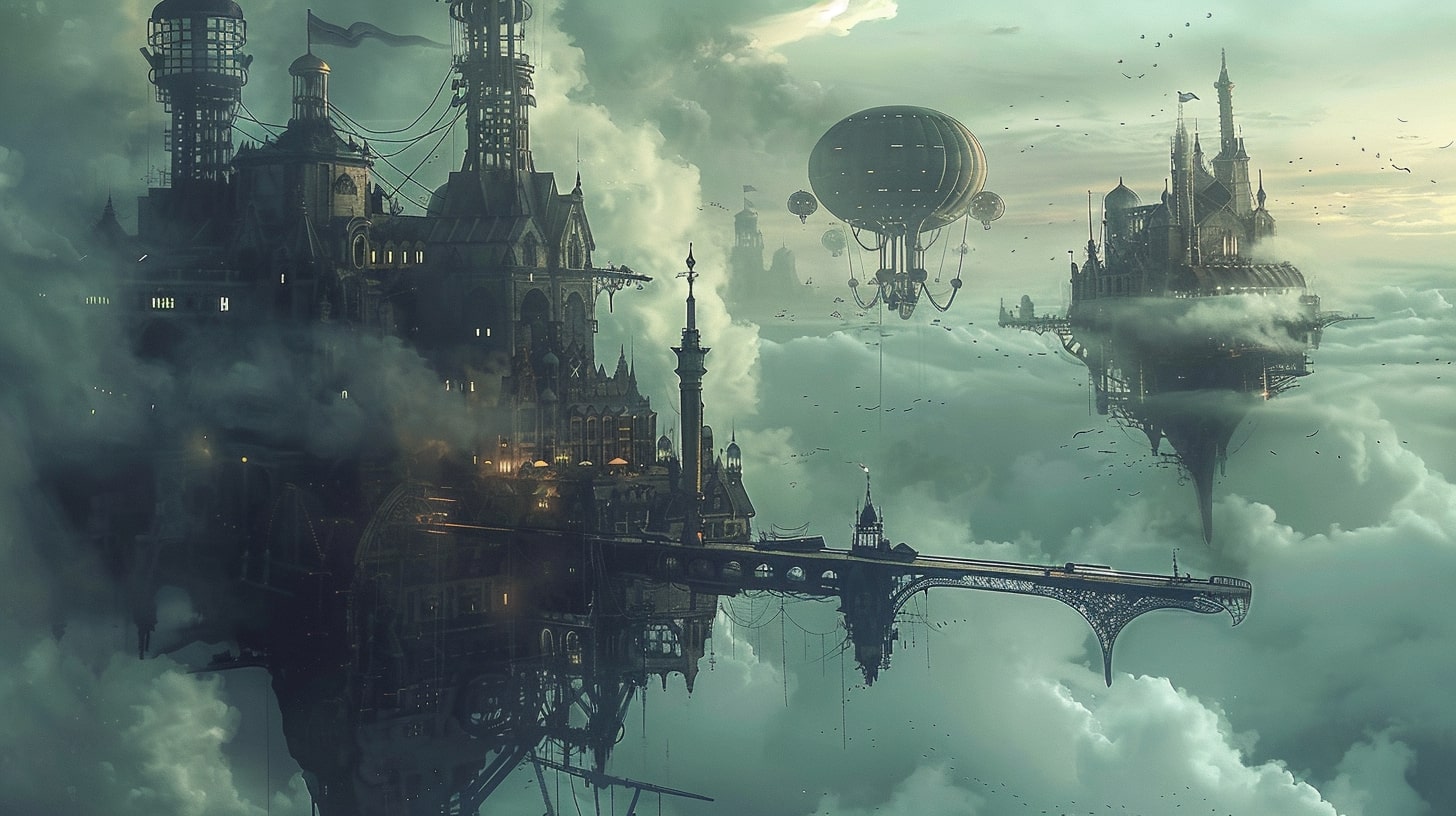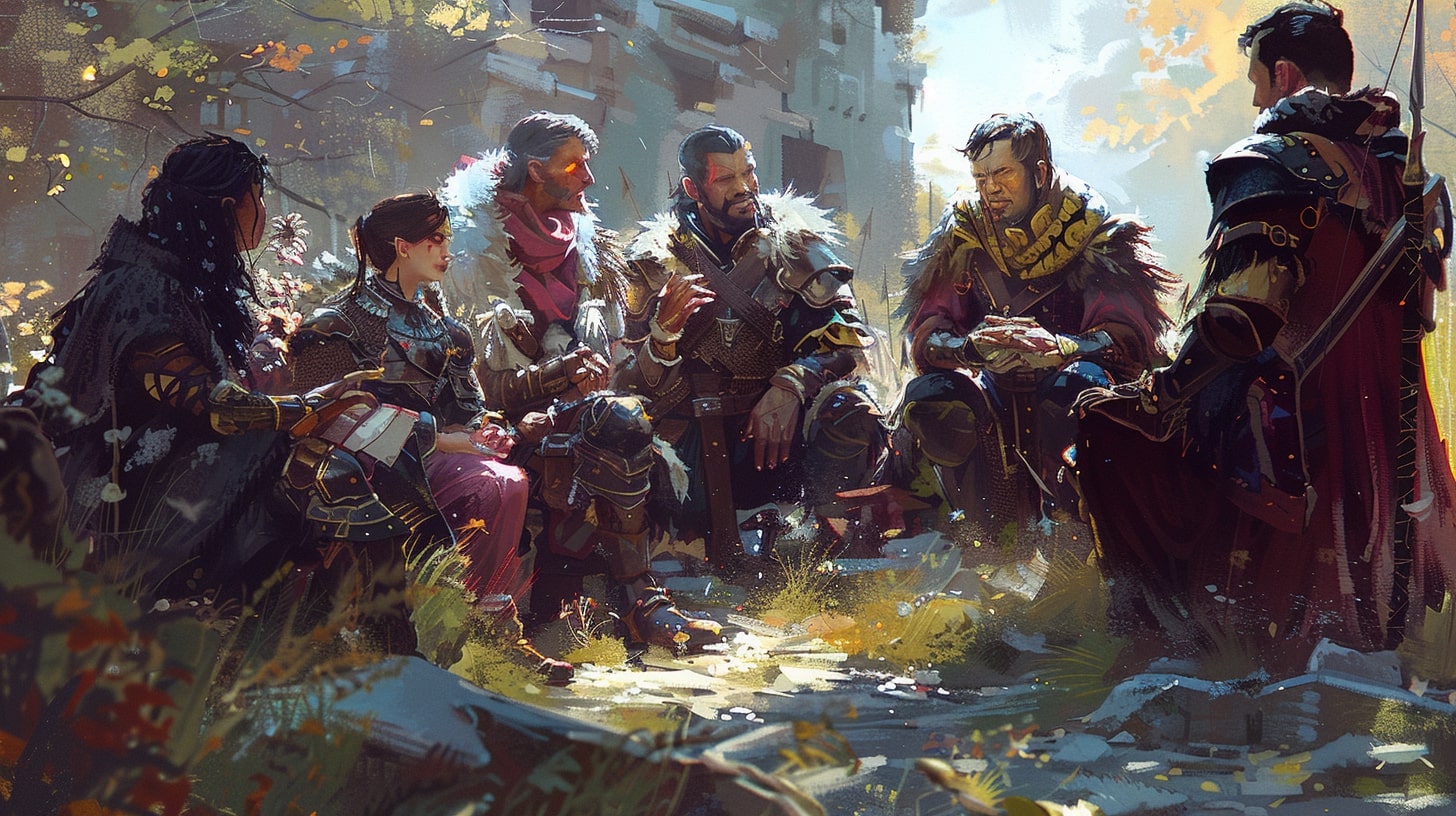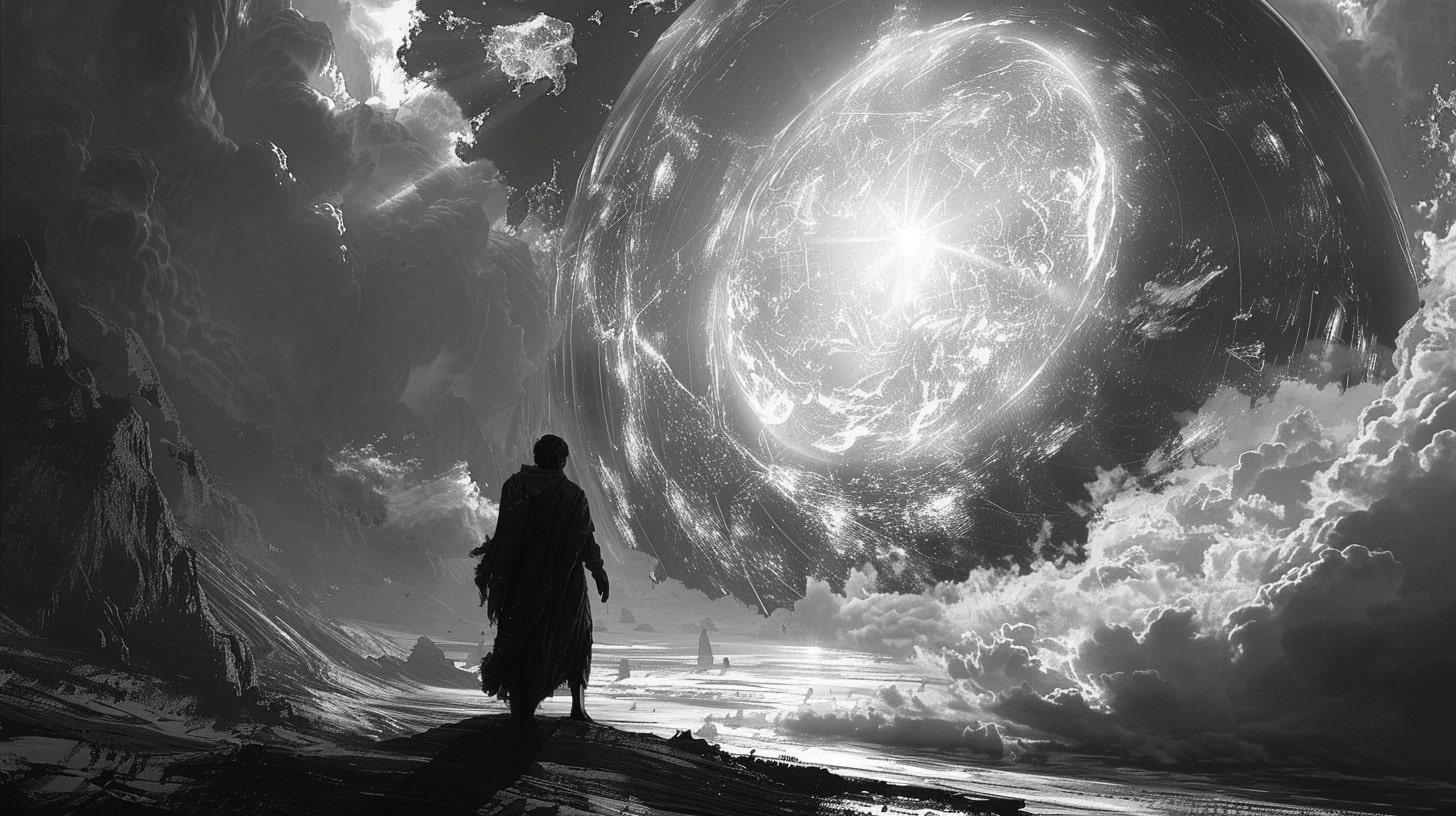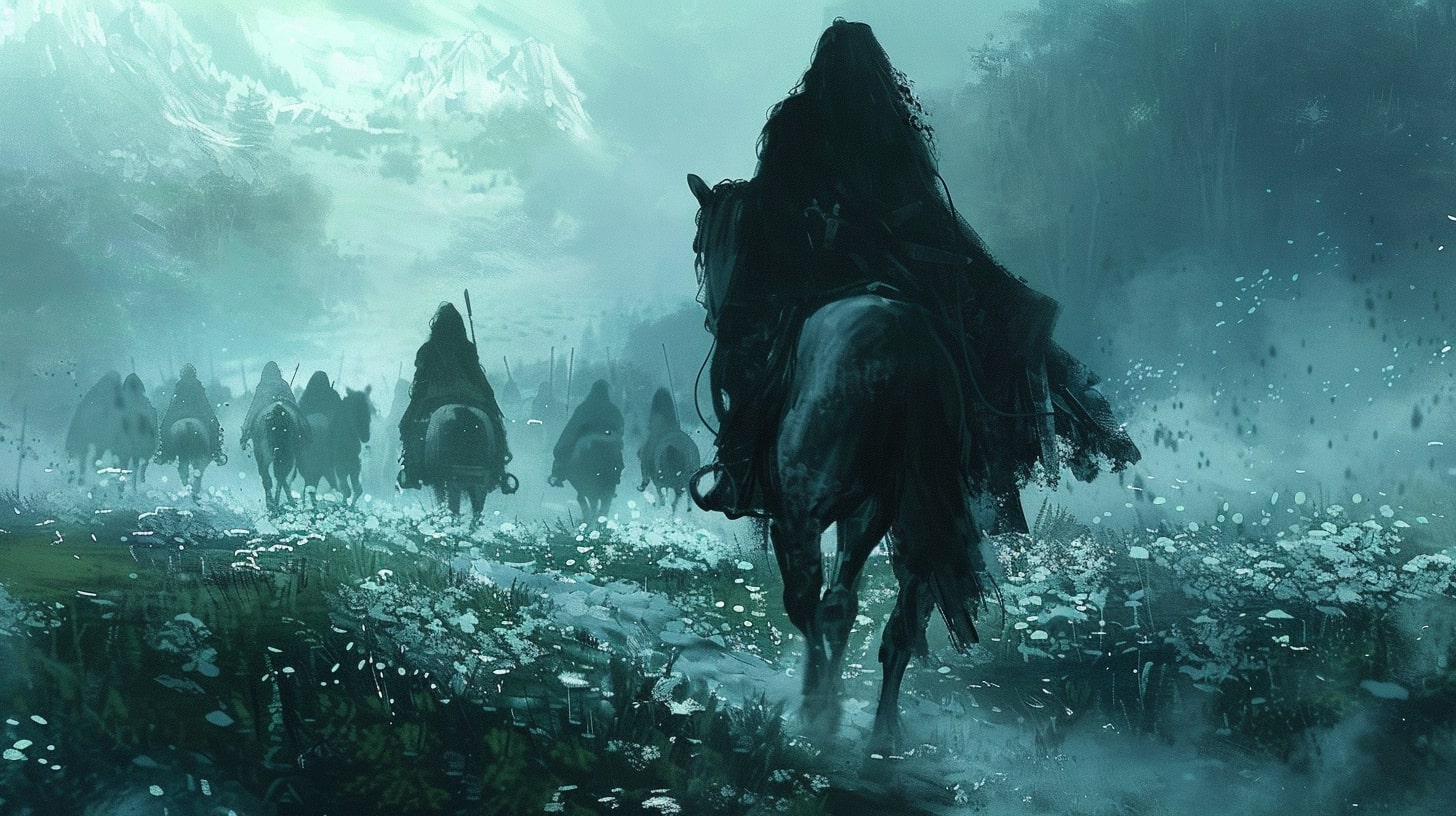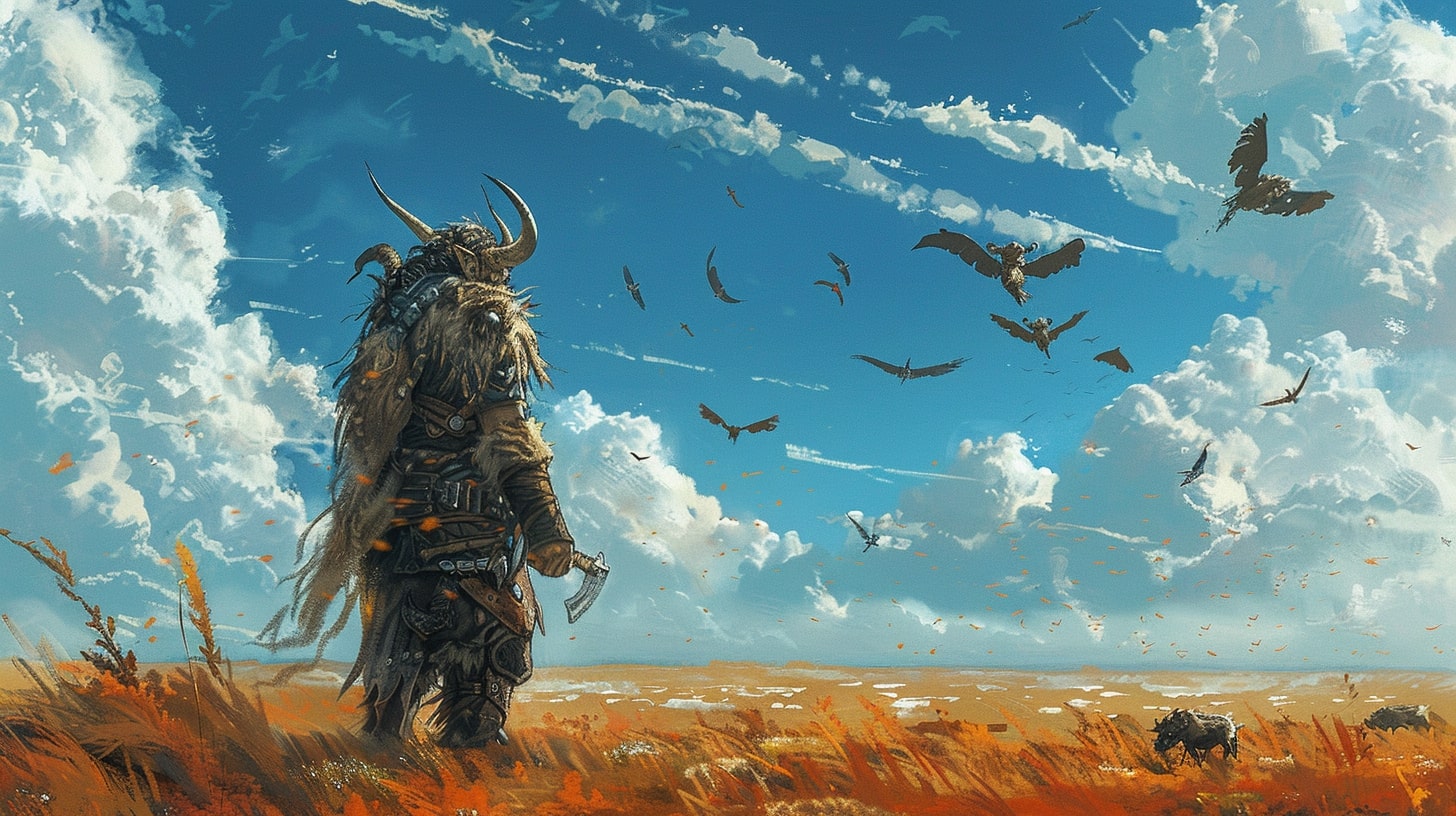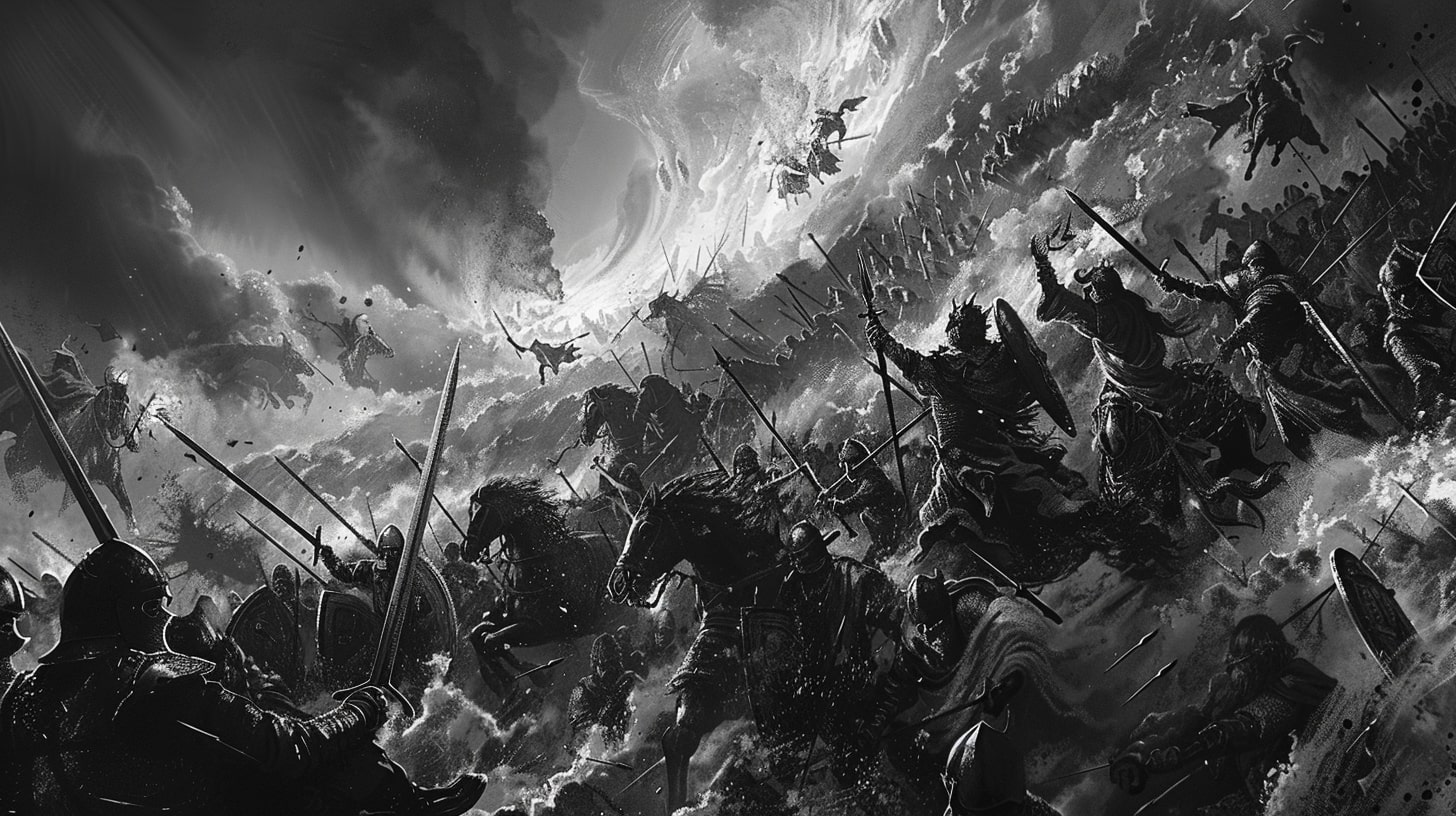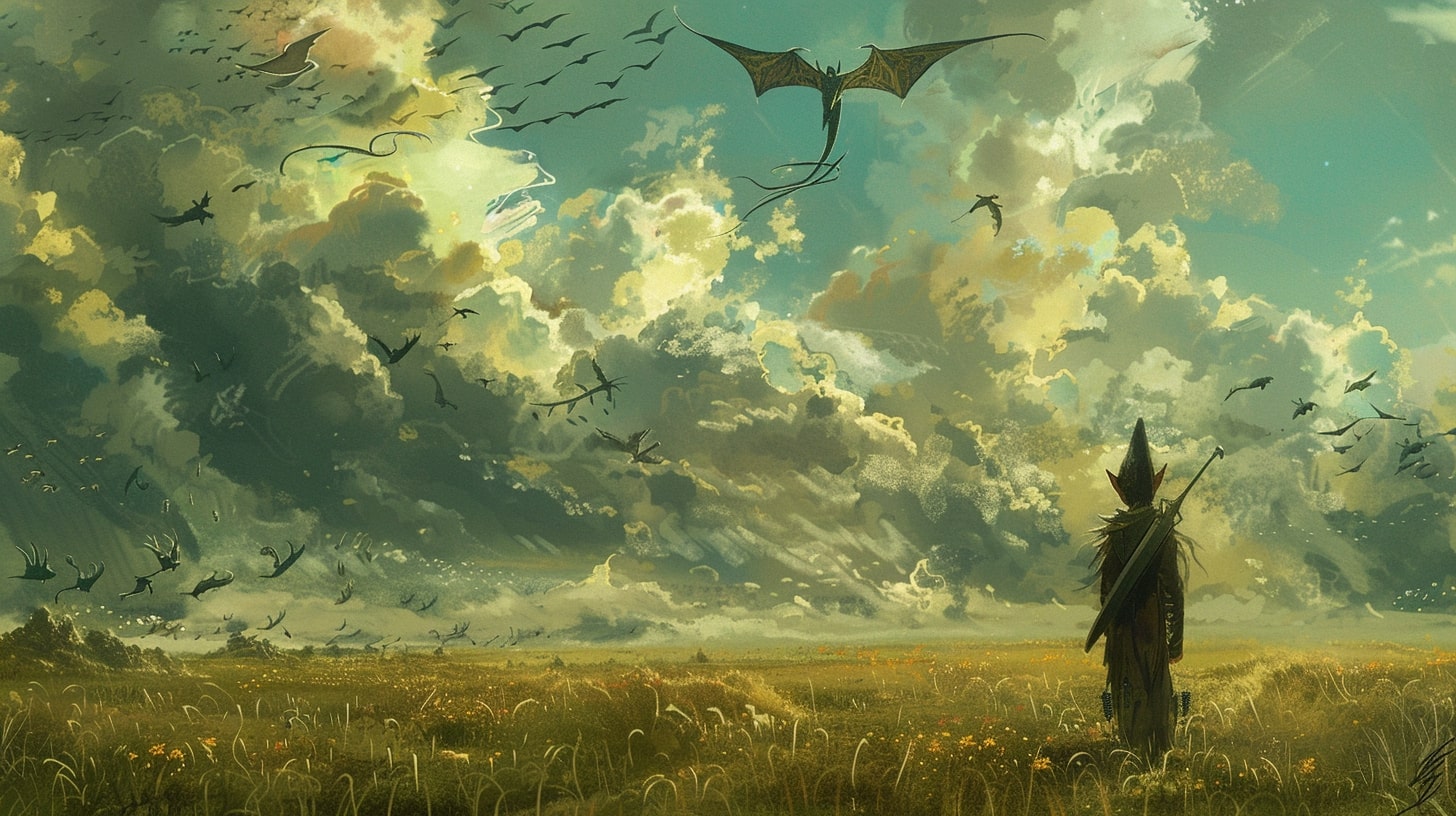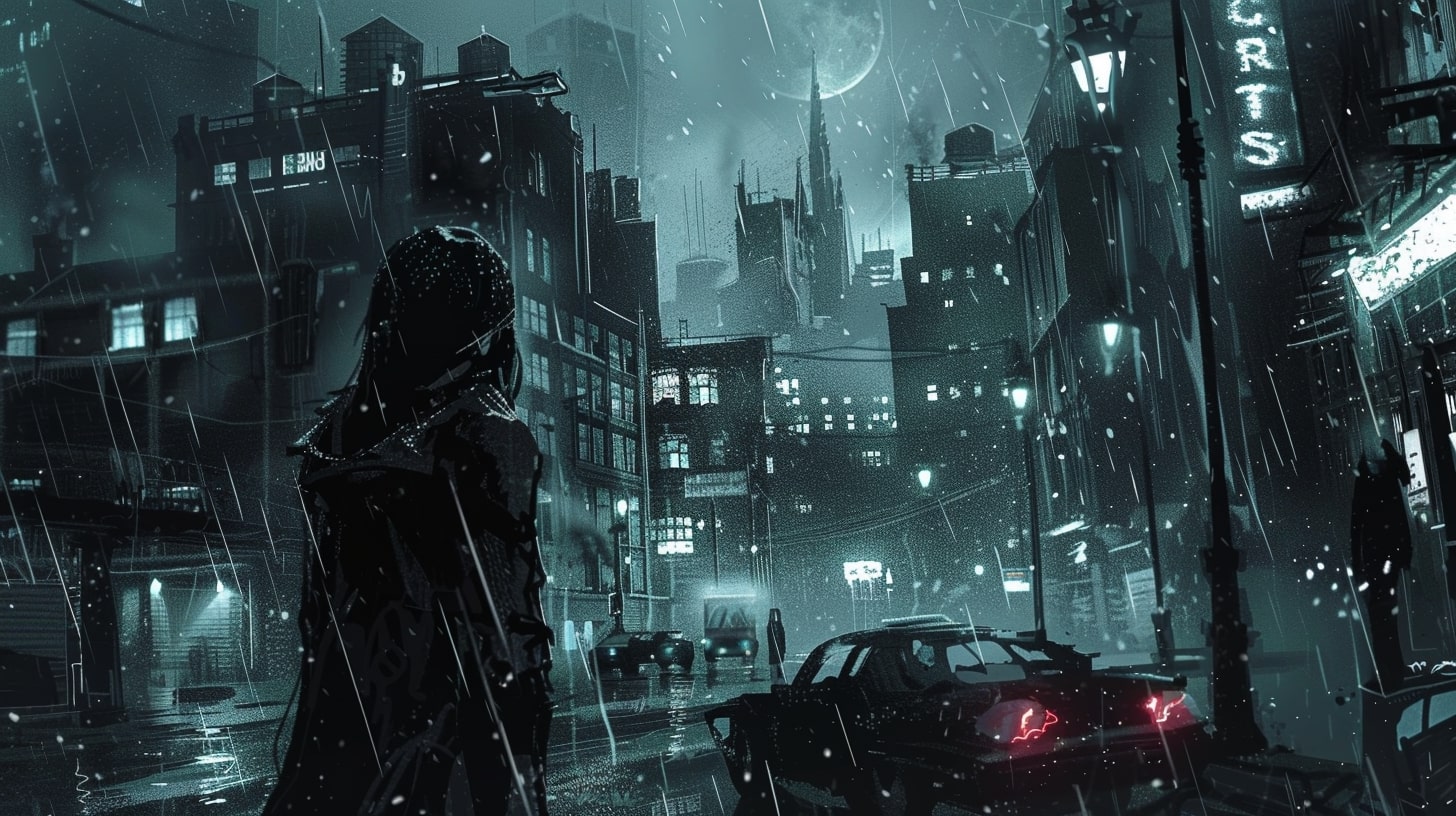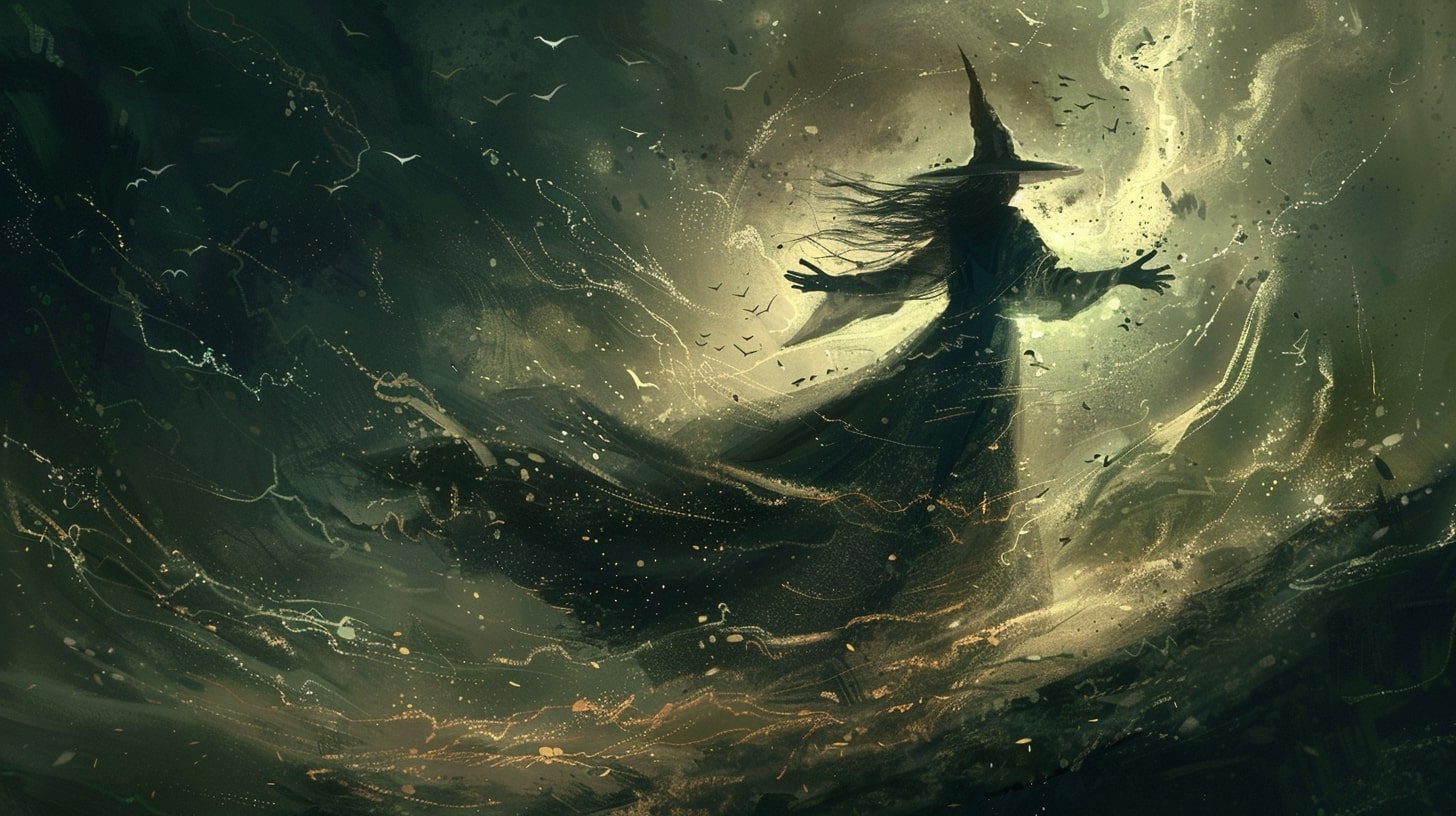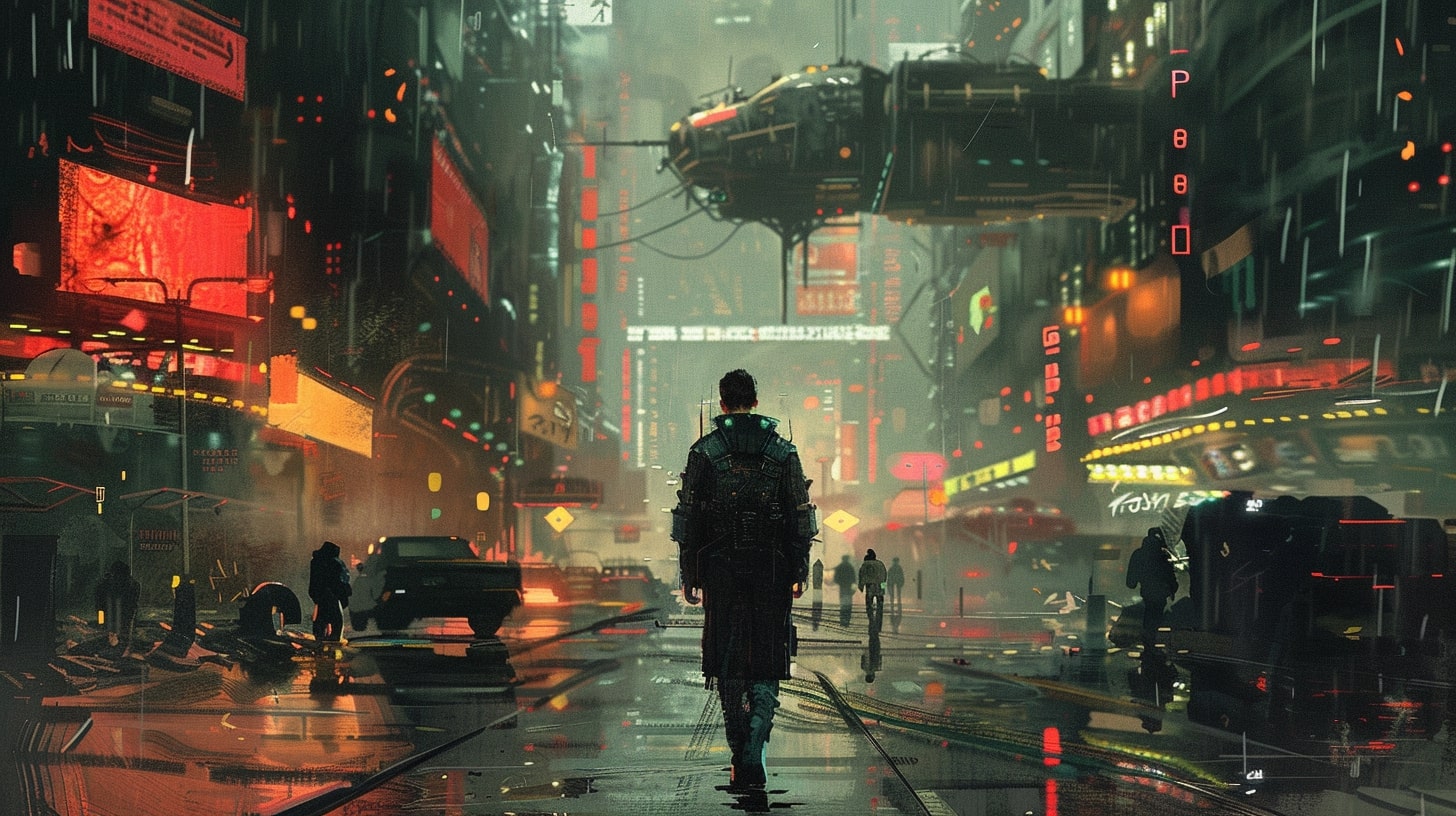Introduction to Dark Fantasy Writing
If you have a penchant for the mysterious and the macabre, writing dark fantasy might just be your calling. In this section, we will explore what dark fantasy is and why it holds a unique allure for writers like yourself.
What is Dark Fantasy?
Dark fantasy is a subgenre of fantasy literature that blends elements of fantasy and horror, creating a captivating and often chilling narrative. It delves into the realms of magic, myth, and the supernatural, but with a darker and more sinister twist. It embraces themes of fear, dread, and the unknown, immersing readers in a world that teeters on the edge of darkness.
In dark fantasy, the fantastical elements are often intertwined with elements of horror, creating an atmosphere of suspense and unease. This subgenre plays with the boundaries between good and evil, exploring the complexities of human nature and the consequences of wielding dark powers.
It’s a genre that allows for exploration of the shadowy depths of the human psyche and the haunting beauty that can be found within darkness.
Why Write Dark Fantasy?
Writing dark fantasy offers a unique opportunity to explore the depths of human emotions and the darker aspects of the human condition. The genre allows you to delve into themes of fear, loss, redemption, and the struggle between light and darkness. It offers a canvas to create complex and morally ambiguous characters, as well as compelling and haunting worlds.
Dark fantasy writing allows you to push the boundaries of traditional fantasy, infusing your stories with a sense of mystery, horror, and suspense. It provides a platform to craft unique and chilling tales that captivate readers and leave them yearning for more.
By writing dark fantasy, you can explore the depths of your imagination and challenge yourself as a writer. It gives you the opportunity to experiment with different writing styles, create vivid and evocative descriptions, and craft plots that keep readers on the edge of their seats.
So, if you’re drawn to the shadows and have a penchant for the eerie and the uncanny, dark fantasy writing might just be the perfect genre for you. Embrace the darkness, unleash your creativity, and embark on a journey to master the art of writing stories that haunt readers.
In the next sections, we will delve into the intricacies of building a haunting world, crafting complex characters, plotting gripping storylines, weaving magic and mythology, writing dark and evocative descriptions, captivating your readers, and honing your craft in the realm of dark fantasy writing.
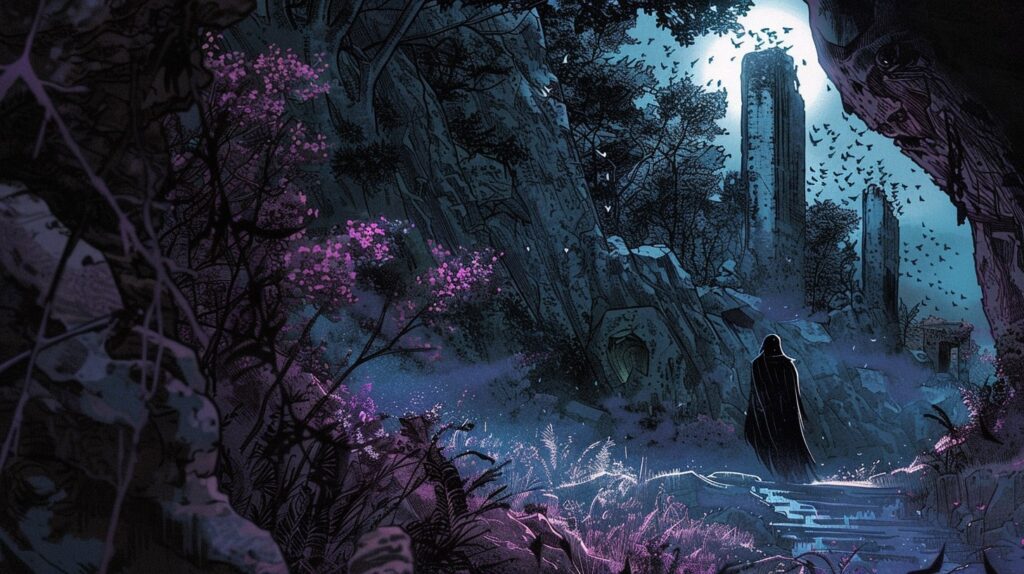
Writing Dark Fantasy: Building a Haunting World
To create a captivating dark fantasy story, an atmosphere of mystery and intrigue is essential to your worldbuilding.. This section will explore two key aspects of building a haunting world: setting the mood and atmosphere and creating original and unique worlds.
Setting the Mood and Atmosphere
Setting the right mood and atmosphere is crucial in dark fantasy writing. It helps to evoke the desired emotions and immerse readers in a world that feels both captivating and eerie. Here are some tips to help you set the mood and atmosphere in your dark fantasy story:
Descriptive Language: Use vivid and evocative language to describe the surroundings and create a sense of foreboding. Employ adjectives and adverbs that convey darkness, decay, and danger. For example, instead of saying “the castle was old,” you could write “the decrepit castle loomed, its crumbling stones whispering secrets of forgotten times.”
Sensory Details: Engage the five senses to make the setting come alive. Describe the sounds, smells, and textures that contribute to the atmosphere. For instance, you could describe the haunting whispers of the wind through the trees or the sickly sweet scent of decaying flowers.
Weather and Lighting: Manipulate the weather and lighting to enhance the mood. Stormy nights, dimly lit corridors, and flickering candlelight can create an eerie and mysterious ambiance.
Contrasting Elements: Contrast light and shadow to create tension and suspense. Play with the interplay between light and darkness, life and death, or hope and despair to add depth to your world.
Remember, the mood and atmosphere should reflect the themes and tone of your dark fantasy story. By setting the right mood, you can engage readers and draw them deeper into the haunting world you’ve created.
Creating Original and Unique Worlds
In dark fantasy writing, creating original and unique worlds is essential to captivate readers. While there are common elements in the genre, adding your own twist and imagination will make your world stand out. Here are some tips to help you create original and unique worlds:
Worldbuilding Basics: Develop a solid foundation for your world by considering its geography, history, and culture. Map out the key locations, understand the political landscape, and flesh out the societal norms and customs.
Fantastical Elements: Infuse your world with fantastical elements that reflect the dark nature of your story. This could include supernatural creatures, dark magic systems, or haunted landscapes. Avoid clichés and strive for fresh and imaginative concepts.
Unique Flavors: Incorporate cultural influences, myths, and legends to add depth and richness to your world. Draw inspiration from real-world cultures or create your own unique mythologies and folklore.
Rules and Limitations: Establish rules and limitations for your world’s magic system, if applicable. This helps maintain consistency and prevents the story from becoming too convenient or predictable.
Unexplored Territories: Introduce unexplored territories or hidden realms within your world to keep readers intrigued. These uncharted areas can hold secrets, ancient artifacts, or formidable challenges for your characters to encounter.
By combining these elements, you can create a dark fantasy world that is both captivating and haunting. Remember to stay true to your imagination and push the boundaries of what is expected in the genre. For more tips on fantasy writing, check out our article on how to write fantasy novels.

Crafting Complex Characters
To create compelling dark fantasy stories, it is essential to craft complex characters that captivate readers and drive the narrative forward. In the realm of dark fantasy, the protagonists and antagonists play a crucial role in shaping the story. Additionally, exploring moral ambiguity adds depth and intrigue to your characters.
Developing Protagonists and Antagonists
When developing protagonists for your dark fantasy story, consider their backgrounds, motivations, and personal struggles. Create multi-dimensional characters with flaws, strengths, and conflicting desires.
A well-rounded protagonist will resonate with readers and make them emotionally invested in the character’s journey. It’s important to strike a balance between relatability and uniqueness, ensuring that your protagonist stands out amidst the darkness.
On the other hand, crafting compelling antagonists is equally important. Antagonists in dark fantasy often embody the forces of evil, chaos, or darkness. Give your antagonists depth and complexity by exploring their past, motivations, and justifications for their actions. This will make them more than mere villains and add layers of intrigue to their character.
Consider introducing moments of empathy and vulnerability for both your protagonists and antagonists. This allows readers to connect with them on a deeper level and understand the shades of gray within their personalities. By creating dynamic and complex characters, you can elevate your dark fantasy story and keep readers engaged throughout.
Exploring Moral Ambiguity
Dark fantasy provides an opportunity to delve into moral ambiguity. Challenge the notions of good and evil by presenting characters who exist in the gray area between right and wrong. This exploration of moral ambiguity adds depth and complexity to your story.
Consider the choices your characters make and the consequences that follow. Allow your readers to question their own beliefs and challenge societal norms through the actions of your characters. By blurring the lines between right and wrong, you create thought-provoking narratives that resonate long after the story is finished.
As you craft your dark fantasy story, remember to develop characters that are multidimensional, relatable, and morally complex. By doing so, you will create a cast of characters that haunts your readers’ minds and keeps them engaged until the final page.

Plotting a Gripping Storyline
To create a captivating dark fantasy story, it’s essential to craft a gripping storyline that keeps readers on the edge of their seats. This section will explore two crucial elements in plotting a compelling dark fantasy narrative: incorporating elements of fear and dread and balancing action and tension.
Incorporating Elements of Fear and Dread
Fear and dread are integral to the dark fantasy genre, as they evoke a sense of unease and anticipation in readers. To incorporate these elements into your storyline, consider the following techniques:
Building atmospheric tension: Set the stage by creating a foreboding atmosphere through vivid descriptions of the setting, weather, and surroundings. Use dark and evocative language to immerse readers in a world filled with shadows, mysteries, and supernatural elements.
Introducing menacing antagonists: Craft compelling villains or creatures that instill fear and dread in your readers. These antagonists can be formidable and ruthless, with unique powers or abilities that pose a significant threat to your protagonists.
Creating suspenseful situations: Engage readers by introducing suspenseful situations and cliffhangers at key moments in the story. Leave unanswered questions, build up to shocking reveals, and keep readers guessing about the outcome of critical events.
Exploring psychological horror: Dive into the psychological aspects of your characters’ fears and traumas. Delve into their darkest thoughts and emotions, exploring the psychological toll that their encounters with darkness and the supernatural have on their psyche.
Balancing Action and Tension
In dark fantasy, it’s important to strike a balance between action-packed sequences and moments of tension. This balance keeps readers engaged and invested in the story. Consider the following tips to achieve this balance:
Designing thrilling action scenes: Craft well-choreographed and visually stimulating action scenes that showcase the unique abilities of your characters. Use dynamic descriptions, incorporating sensory details to immerse readers in the heart-pounding moments of combat or magical confrontations.
Employing pacing techniques: Vary the pace of your narrative to create tension and release. Alternate between fast-paced action sequences and slower, reflective moments to give readers a chance to catch their breath and process the events unfolding in the story.
Utilizing dialogue and internal monologues: Use dialogue and internal monologues to reveal characters’ thoughts, motivations, and fears during intense moments. This provides insight into their emotional state and heightens the tension in crucial scenes.
Implementing time pressure: Introduce time constraints or impending dangers to add urgency and increase tension. The characters’ race against the clock can amplify the stakes and keep readers engaged as they wonder if the protagonists will succeed or fall victim to the encroaching darkness.
By skillfully incorporating elements of fear and dread and balancing action and tension, you can create a gripping storyline that hooks readers and keeps them eagerly turning the pages of your dark fantasy tale. Remember to analyze and learn from existing dark fantasy works to further refine your craft and create a truly haunting narrative experience.
Weaving Magic and Mythology
To create a captivating dark fantasy story, it’s essential to weave elements of magic and mythology into your narrative. By designing a unique magic system and utilizing mythology and folklore, you can add depth and intrigue to your dark fantasy world.
Designing a Unique Magic System
A well-crafted magic system is a fundamental aspect of dark fantasy writing. As you develop your magic system, consider the rules, limitations, and source of magic in your world. Will magic be rare and mysterious, or abundant and accessible? How is it acquired or learned? Are there consequences or costs associated with using magic?
To design a unique magic system, you can draw inspiration from various sources such as creating a fantasy magic system. Consider incorporating different types of magic, such as elemental magic, necromancy, or blood magic. Develop a consistent set of rules and limitations to ensure your magic system remains believable and coherent throughout your story.
Utilizing Mythology and Folklore
Mythology and folklore provide a rich tapestry of legends, creatures, and legends that can enrich your dark fantasy world. Drawing inspiration from existing mythologies or creating your own can add depth and authenticity to your storytelling. Consider incorporating mythical creatures, gods and goddesses, or ancient prophecies into your narrative.
Researching various mythologies and folklores from different cultures can provide you with a wealth of inspiration. However, it’s important to approach these sources respectfully and avoid appropriating or misrepresenting cultural beliefs. By blending elements of mythology and folklore into your dark fantasy story, you can create a sense of familiarity or intrigue for readers.
Remember to create your own unique twist on these mythological elements to make them fit seamlessly into your dark fantasy world. This allows you to add a layer of mystery and ambiguity to your story, captivating readers and immersing them in a fantastical realm.
By weaving magic and mythology into your dark fantasy story, you can create a world that is both haunting and captivating. Designing a unique magic system and utilizing elements of mythology and folklore adds depth and richness to your narrative, keeping readers spellbound until the very end.
Writing Dark and Evocative Descriptions
To create a captivating dark fantasy story, it’s essential to master the art of writing dark and evocative descriptions. These descriptions help transport your readers into the haunting and mysterious world you’ve created. By painting vivid and haunting scenes and incorporating symbolism and metaphor, you can immerse your readers in the eerie and atmospheric atmosphere of your story.
Painting Vivid and Haunting Scenes
One of the key elements of dark fantasy writing is the ability to paint vivid and haunting scenes with your words. This involves using descriptive language to evoke emotions and create a sense of unease or foreboding. Here are a few tips to help you master this skill:
Engage the senses: Describe not only what your characters see, but also what they hear, smell, taste, and touch. By engaging multiple senses, you can create a more immersive experience for your readers.
Use strong and specific adjectives: Choose words that have a strong impact and convey the eerie and mysterious atmosphere you want to create. For example, instead of saying “the room was dark,” you could say “the room was shrouded in suffocating darkness.”
Employ vivid imagery: Use metaphor and simile to create vivid mental images in the minds of your readers. For example, you could describe a moonlit forest as “a silver sea of twisted branches, reaching out like skeletal fingers.”
Set the tone: Adjust your writing style and tone to match the dark and haunting nature of your story. Use shorter sentences and more concise language to create a sense of urgency and tension.
By incorporating these techniques into your writing, you can bring your dark fantasy world to life and leave a lasting impression on your readers.
Using Symbolism and Metaphor
Symbolism and metaphor are powerful tools in dark fantasy writing. They allow you to convey deeper meanings and add layers of complexity to your story. Here’s how you can effectively use symbolism and metaphor in your dark fantasy writing:
Choose symbolic elements: Select objects, creatures, or settings that can carry symbolic meaning in your story. For example, a raven might symbolize death or a crumbling castle could represent the decay of power.
Weave metaphorical language: Use metaphor to create connections between different elements in your story. For instance, you could describe a character’s heart as a “blackened stone” to convey their cold and unfeeling nature.
Explore themes: Use symbolism and metaphor to explore the themes and motifs of your dark fantasy world. This can add depth and richness to your storytelling.
Leave room for interpretation: Allow readers to interpret the symbolism and metaphor in their own way. This can create a more engaging reading experience and invite deeper analysis.
Remember to balance the use of symbolism and metaphor with clarity and readability. While they can enhance your writing, it’s important not to overwhelm or confuse your readers.
By mastering the art of writing dark and evocative descriptions, you can transport your readers to a haunting world filled with mystery and intrigue. Practice these techniques and experiment with your writing to find your unique voice in the dark fantasy genre.
Captivating Your Readers
As a writer of dark fantasy, captivating your readers from the very beginning is essential to keep them engaged throughout your story. In this section, we will explore two important techniques to achieve this: engaging openings and hooks, and building suspense and surprise.
Engaging Openings and Hooks
The opening lines of your dark fantasy story are your chance to grab your readers’ attention and draw them into your world. Consider starting with a powerful and intriguing sentence that sets the tone for your story.
This can be a thought-provoking statement, a vivid description, or an enigmatic question that piques curiosity. By doing so, you immediately establish a sense of mystery and intrigue, compelling your readers to continue reading.
Another effective way to engage your readers is by introducing a compelling character right from the start. Focus on creating a protagonist with a unique personality, motivation, or conflict.
Make your readers care about what happens to this character by portraying their emotions, desires, or struggles. By establishing an emotional connection early on, you can draw your readers into the story and make them invested in the outcome.
To further captivate your readers, consider incorporating an action-packed scene or an intriguing event in the opening chapters. This can create a sense of urgency and excitement, leaving readers eager to know what happens next. Remember to balance the pace and intensity of these opening scenes with the overall tone and atmosphere of your dark fantasy world.
Building Suspense and Surprise
Suspense and surprise are essential elements in dark fantasy storytelling. To keep your readers on the edge of their seats, gradually build tension throughout your story.
This can be achieved through a series of mysterious events, unexpected twists, and unanswered questions. By withholding certain information and revealing it strategically, you can create a sense of anticipation and intrigue.
Consider introducing cliffhangers at the end of chapters or sections to keep readers hooked and eager to turn the page. These can be dramatic revelations, shocking discoveries, or sudden shifts in the story’s direction.
By leaving your readers with a sense of uncertainty or curiosity, you encourage them to continue reading to find out what happens next.
Incorporating plot twists can also add an element of surprise to your dark fantasy story. These unexpected turns in the narrative can challenge readers’ assumptions and keep them engaged. However, it is important to ensure that these twists are logical and well-paced, avoiding any forced or contrived moments.
By combining engaging openings and hooks with suspenseful storytelling techniques, you can captivate your readers and keep them enthralled by your dark fantasy world.
Remember to maintain a balance between satisfying their expectations and surprising them along the way. With practice and experimentation, you can master the art of captivating your readers and creating stories that haunt them long after they finish reading.
Honing Your Craft
To become a master of writing dark fantasy, it’s essential to continually hone your craft and improve your skills. Here are two key areas to focus on:
Reading and Analyzing Dark Fantasy Works
To enhance your understanding of the genre and gain inspiration for your own writing, immerse yourself in the world of dark fantasy literature. Read widely across various dark fantasy subgenres, exploring different authors and their unique storytelling approaches. Pay attention to the elements that make their works compelling, such as the atmosphere, character development, and plot structure.
Analyze the techniques employed by successful dark fantasy authors to create a haunting and immersive experience for readers. Take note of how they weave suspense, develop complex characters, and bring their worlds to life. By studying the works of others, you can learn valuable lessons and apply them to your own writing. For more insights, you can check out our article on how to write fantasy novels.
Practicing and Refining Your Writing Skills
Like any skill, writing requires practice and dedication. Set aside dedicated time to write regularly, allowing yourself to experiment with different dark fantasy themes, settings, and characters. Practice writing vivid descriptions that evoke the eerie and mysterious atmosphere characteristic of dark fantasy. Experiment with different narrative techniques, such as using symbolism and metaphor to enhance the depth of your storytelling.
Additionally, seek feedback on your writing from trusted peers or join writing communities where you can share your work and receive constructive criticism. Take the feedback you receive and use it to refine your writing skills. Remember, the more you write and seek feedback, the more you will grow as a writer. For more tips and techniques specific to fantasy writing, you can refer to our article on fantasy writing tips.
By reading and analyzing dark fantasy works and consistently practicing your writing skills, you can continue to develop and refine your craft. Embrace the journey of continuous learning and improvement, as it is through dedication and perseverance that you will master the art of writing dark fantasy stories that haunt and captivate readers.
